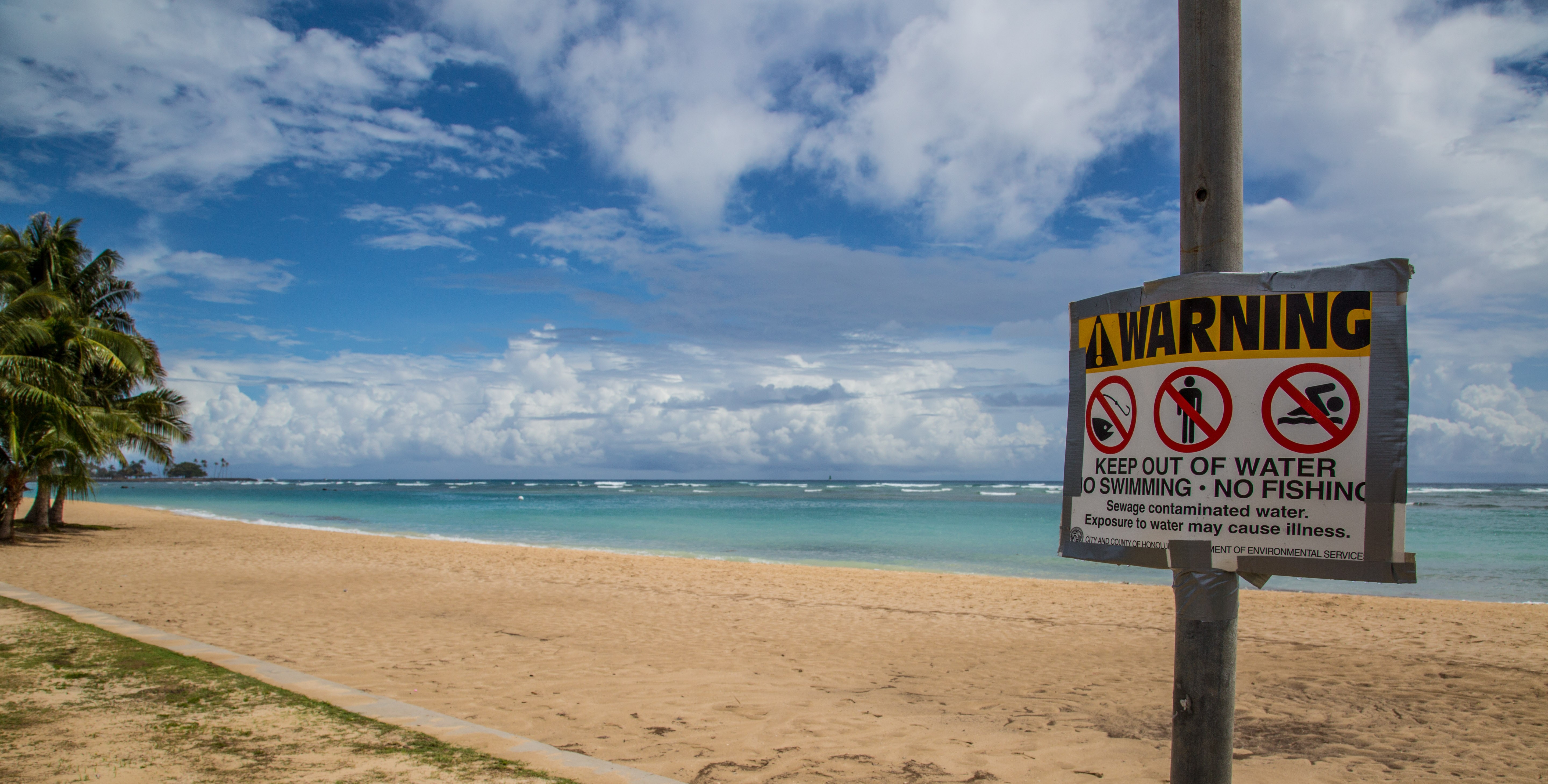
This evening the Hawaii Department of Health (HDOH) will hold the first of 5 public meetings to launch its revised beach monitoring and public notification program. There will be one meeting on each of the major Hawaiian islands and two on the Big Island (1 in Kona, and the other on Hilo). During these meetings HDOH will explain the changes it has made to its beach monitoring program to meet the minimum program standards required to continue to receive their BEACH Act grant administered by the EPA.
Over the last year, Surfrider has been working with both the EPA and HDOH to make improvements to the State’s beach monitoring program to provide better information and public health protection at all of Hawaii’s beaches. Previously, the State was only posting warning signs at the beach when sewage spills occurred or some other known human source of pollution could be identified as the cause of high bacteria levels at the beach. Now the State will be posting caution signs whenever their regular monitoring program measures bacteria levels at the beach that exceed the state recreational health standard of 130 enterococcus/100 ml of seawater.
Through the course of the past year, Surfrider staff and volunteers have helped the Clean Water Branch staff responsible for running the beach water testing program develop the below signage to post at the beach and informational brochures that help explain to the public what these signs mean and recommended actions to avoid getting sick at the beach.

Although we are still working on reviewing the entire revised beach monitoring program posted online here, our first impressions are that the number of beaches that will be covered and the frequency of testing is not adequate to really do a good job of protecting public health at the beach. HDOH is proposing to monitor 49 Tier 1 beaches throughout the state: 11 beaches on the Big Island to be tested monthly, 13 beaches on Maui and 5 on Kauai to be tested weekly, and 24 beaches on Oahu to be tested bi-weekly.
HDOH receives approximately $320,000 every year through its EPA BEACH grant to help run its beach monitoring program, and although Hawaii certainly does have logistical challenges operating on different islands and a year-round beach season, it still seems that they should be able to provide more coverage to better inform beachgoers on where it is safe to go into the water and where it isn’t. Or be more open to using community knowledge and citizen science - like the BWTF programs that are running strong on Kauai, Oahu & Maui - to extend the coverage of their program and to best prioritize where to use their limited staff and monitoring resources.
This is why its important for the public to show up at these meetings and let HDOH know where you like to recreate in the ocean and where you have concerns that people might be exposed to polluted water. Meeting schedule below. Show up and Make Your Voice Heard!
- June 7, 2017 - Wednesday - Hawaii (Kona): West Hawaii Civic Center Building B, 74-5044 Ane Keohokalole Hwy, 6pm
- June 13th - Tuesday - Hawaii (Hilo): Hawaii District Health Office, 1582 Kamehameha Ave., 6pm
- June 15th - Thursday - Oahu: Washington Middle School Cafeteria, 1633 South King St., Honolulu, 6pm
- June 21rst - Wednesday - Kauai: Kauai District Health Office Conference Room, 3040 Umi St., Lihue, 6pm
- June 27th - Tuesday - Maui: J. Walter Cameron Center, 95 Mahalani St., Wailuku, 6pm
